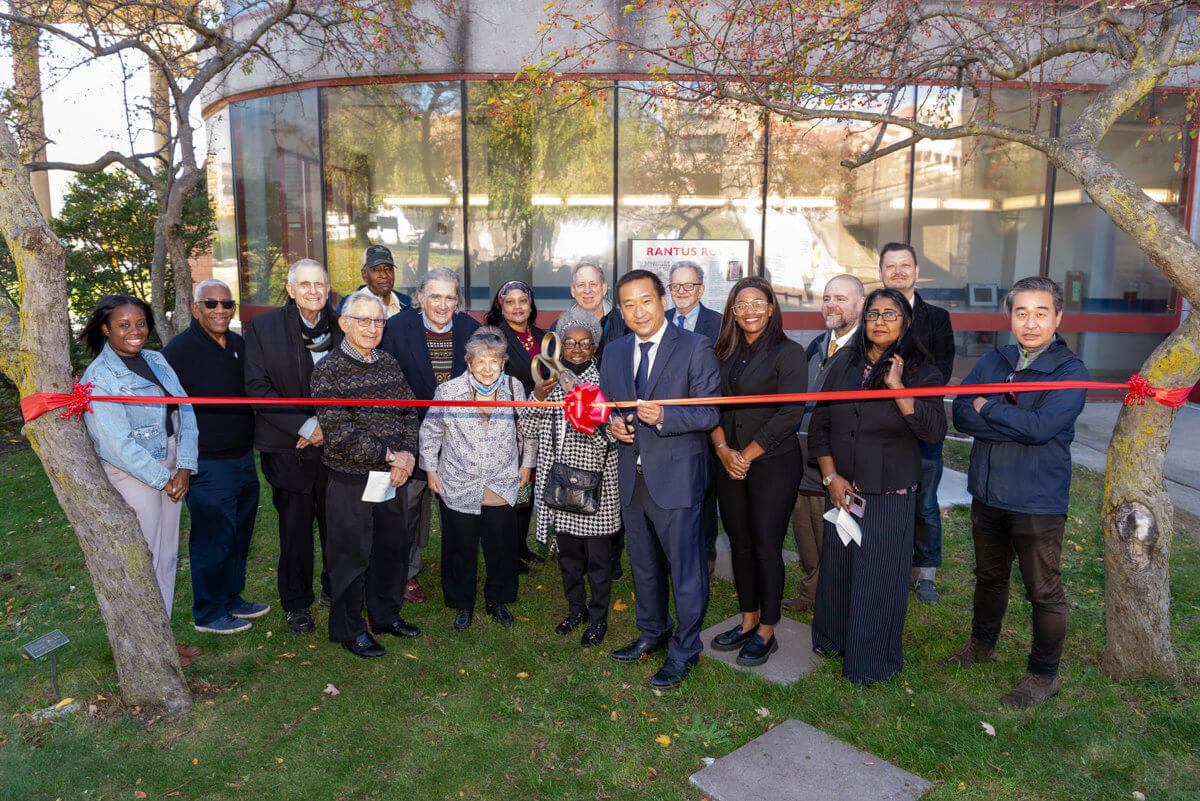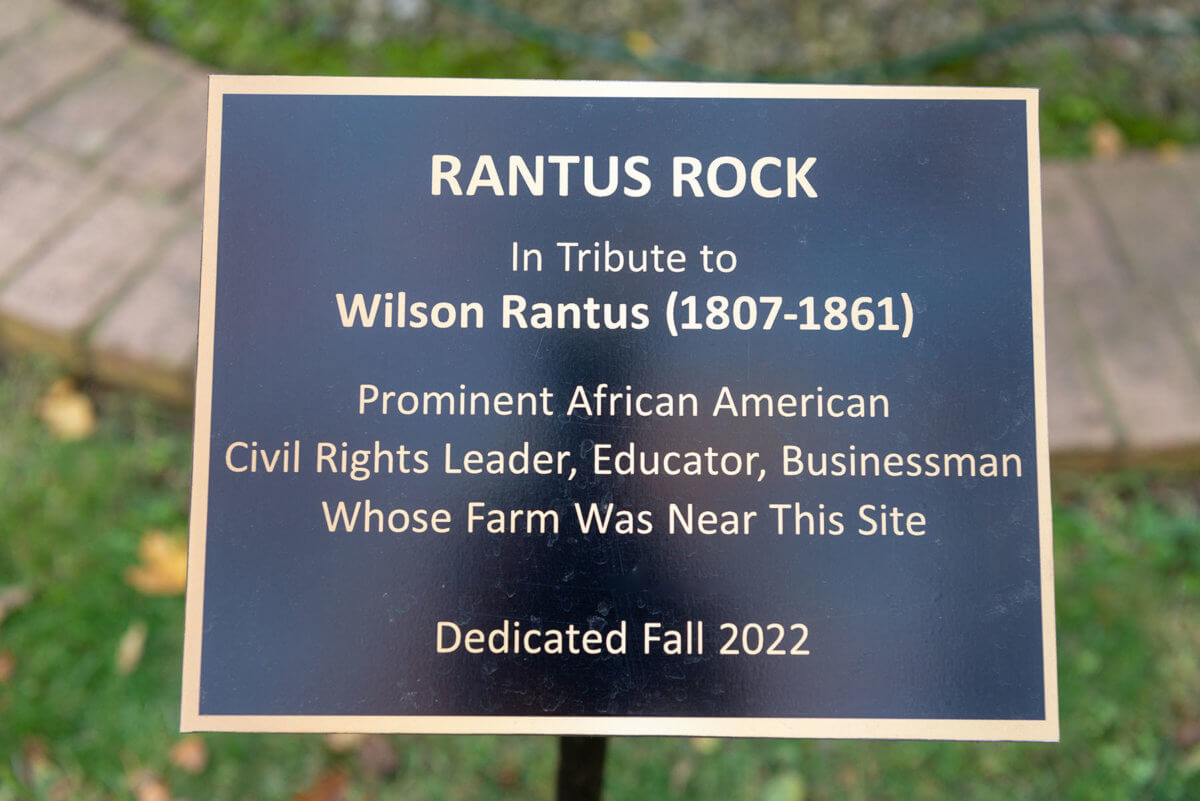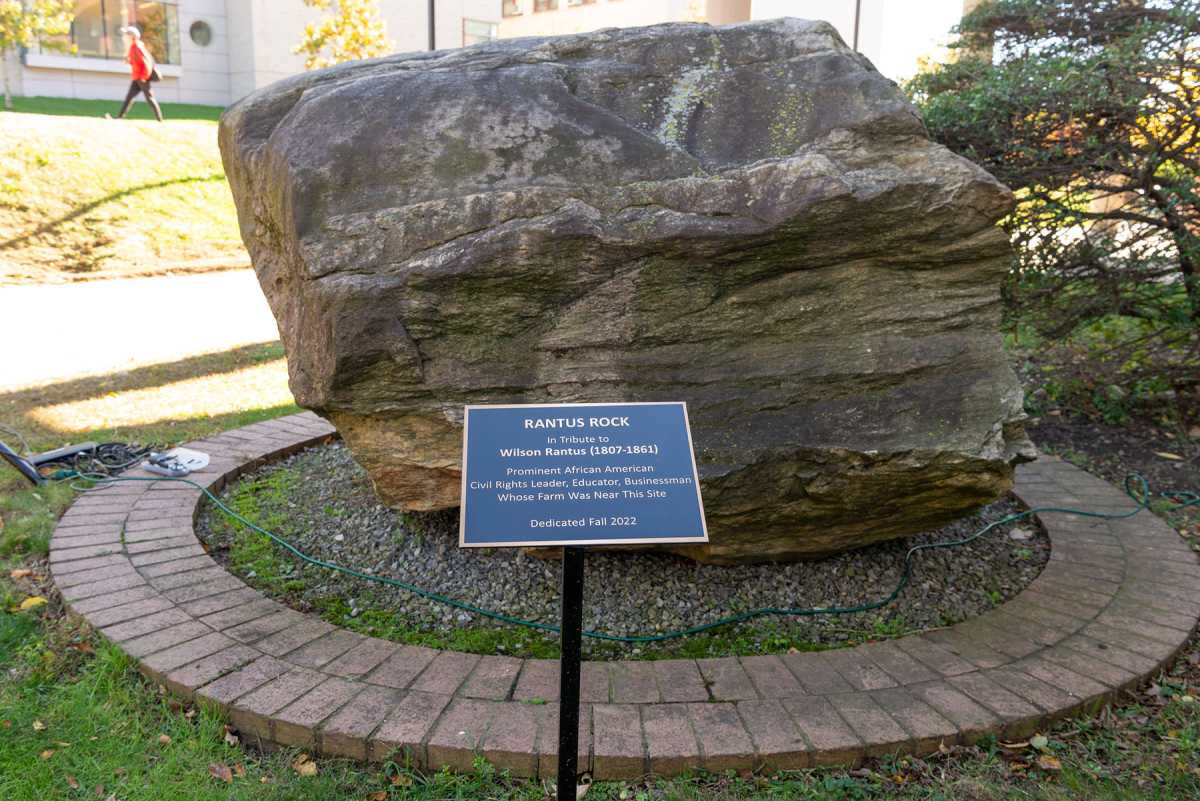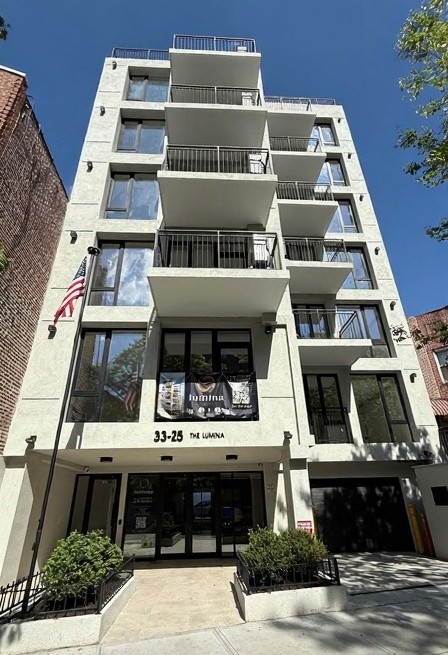Queens College President Frank Wu hosted a ribbon-cutting ceremony in front of the Science Building on Oct. 27 to dedicate “Rantus Rock” in tribute to Wilson Rantus, a prominent African American civil rights leader, educator and businessman who lived from 1807 to 1861.

The approximately 13-ton gneiss boulder, which is more than a billion years old, sits close to what was the Rantus farm and family cemetery, bordered by what is now the southwest edge of campus at Melbourne Avenue, 149th Street and Gravett Road in Flushing.
Wu recognized the contributions of the Queens College Community Advisory Board and the Rantus Rock Sub-Committee for their efforts on the project. Following the ceremony, a reception was held in the college’s Benjamin S. Rosenthal Library.
“This is an extraordinary moment for the college and the wider Flushing community, with whom we’ve worked to highlight and preserve Rantus’ legacy,” Wu said. “Because of his contributions to Queens and his family’s connections to this neighborhood, we are commemorating Rantus with a place on campus close to his family’s property. Change is slow, but its impact is lasting. That’s why we’re marking this site with a more than billion-year-old rock excavated in the construction of the Science Building in 1982. Perhaps in another 40 years we will be able to say, ‘Look how far we have come since we dedicated this site to Wilson Rantus.’”
The area surrounding the boulder currently serves as space for contemplation on the campus, with benches situated nearby. A garden is planned for the area.

Born in what is now known as Jamaica, Rantus became a civil rights activist, educator and landowner with holdings throughout the borough. He provided financial backing for the Anglo African, a magazine launched by pioneering African American journalist Thomas Hamilton in 1858.
Rantus helped build a school for African American children and also worked to organize statewide conventions in support of an amendment to the New York state constitution to change the law that barred African American citizens who were not property owners from voting.
Rantus was buried in his family’s cemetery in 1861. In the early ’50s, in preparation for the construction of an apartment complex on the cemetery site, the remains of three individuals were moved with the consent of Rantus’ descendants to Evergreens Cemetery in Brooklyn.
One of the two gravestones found was for Rantus. In June 2014, Rantus’s gravestone appeared without explanation in the backyard of a Flushing resident. The 153-year-old marble tombstone was relocated to Evergreens Cemetery in Brooklyn later that month where it now marks Rantus’ remains.
The approximately 13-ton gneiss boulder that will serve as Rantus Rock is thought to be a piece of bedrock from the Hudson Highlands picked up by moving glacial ice and deposited 13,000 to 18,000 years ago on what is now the Flushing campus.
It is surmised that the edge of the glacier stood along the east-west rise of the wall where the boulder rolled off and was then buried in sand from the melting ice sheet. The fragment was originally located several kilometers beneath the earth’s surface and through subsequent erosion over hundreds of millions of years was brought to within 20 feet of the earth’s surface.




































